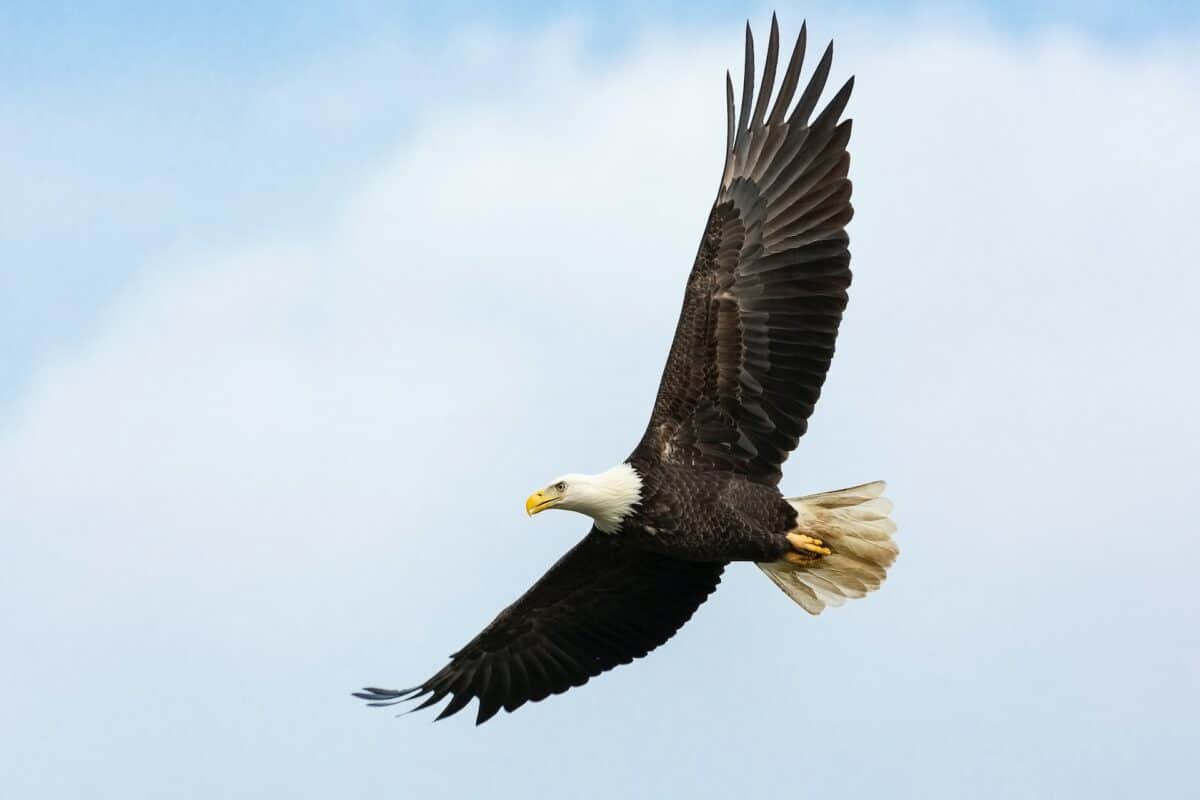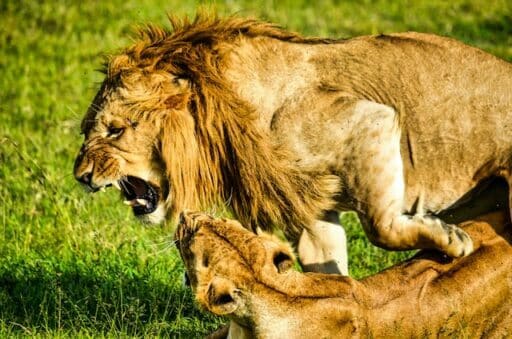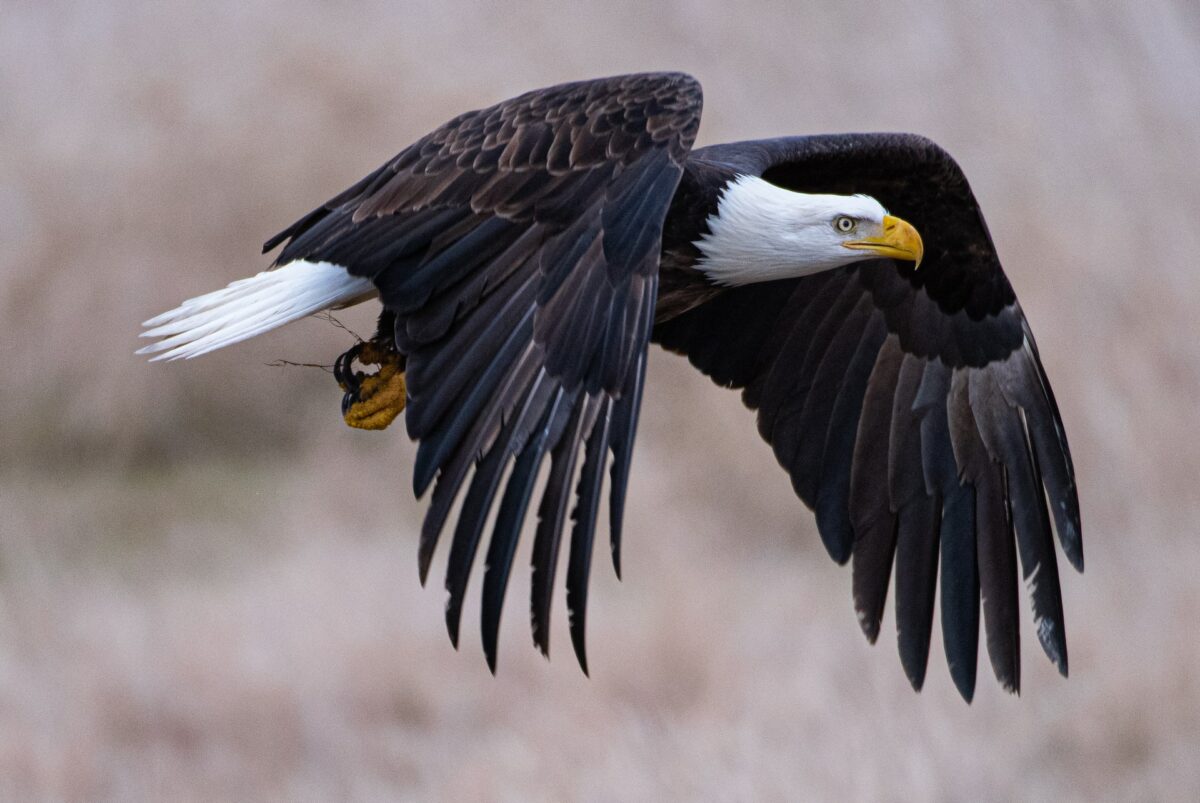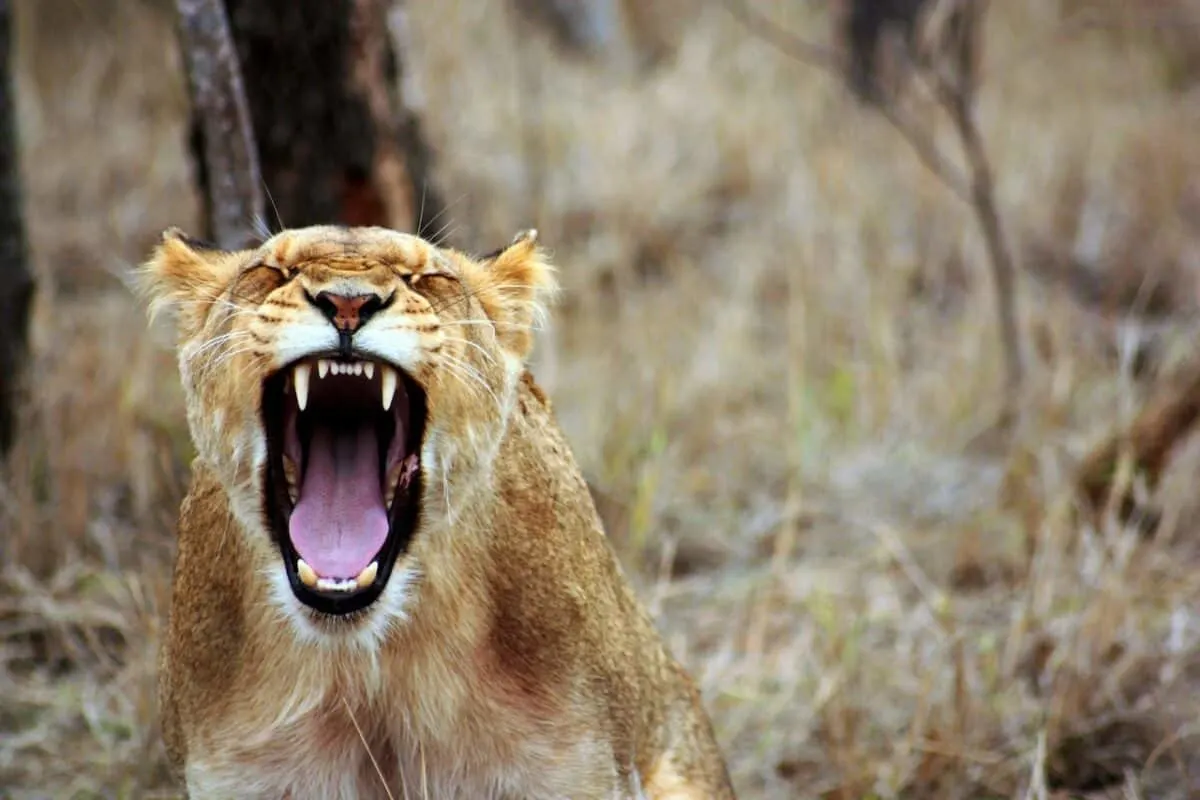Who Will Prevail In An Intense Match? | Lion vs. Eagle
Are you a fan of animals and have ever wondered who would win in a fight between a lion and an eagle? On the one hand, the lion is known for its vast size, strength, ferociousness, and bravery.
On the other hand, there’s the mighty eagle with incredible vision and lethal talons capable of causing massive damage to its prey. So who will prevail in such an intense match? Let’s look at both contenders and find out which one is on top!

Want to jump ahead? Click below
Comparison Table of Lion vs. Eagle
| Lion | Eagle | |
|---|---|---|
| Scientific name | Panthera leo | Accipitridae (Family). |
| Habitat | Grasslands, open woodlands, scrublands, and dry savannas throughout Africa, India, and Asia | Worldwide |
| Weight: | Males weigh around 350-420 pounds, while females weigh 250-300 pounds. | 20 lbs |
| Type of attack | Stalking and ambushing the prey | Opportunistic hunters |
| Social Structure | Live together in groups called prides | Eagles are monogamous birds and they mate for life |
Lions

Physical Characteristics
Lions are the second largest cat species, with males being much more significant than females. The average male weighs between 330 and 550 lbs. The average female weighs around 265 to 400 lbs.
Males also have a prominent mane of hair around the face, neck, and chest, which is thought to emphasize their size and provide protection during fights. Lions have short, tawny fur and a tail tipped with a black coat that helps them navigate in the dark.
Habitat and Distribution
Lions live in extensive open grasslands, savannahs, and woodlands across sub-Saharan Africa, as well as isolated parts of India and western China.
They prefer areas with adequate prey density for hunting purposes and access to water for drinking and cooling off from the heat. Within their habitats, lions form prides of 3-30 individuals living together as they hunt and travel throughout their home ranges.
Diet and Hunting Habits
Lions are carnivorous predators that feed primarily on large animals like gazelles, antelopes, wildebeests, and zebras, providing valuable cat energy sources. Lions generally hunt during twilight or night hours when it’s cooler outside to conserve energy when chasing after their prey.
When a pride hunts together, each member has its specific role: some stalk their prey while others act as guards or distractors to confuse the animal. Once one or two pride members have killed an animal, it gets shared among all members present so no lion goes hungry from a bad hunt day!
Social Structure and Breeding Habits
The social structure of lions revolves around prides consisting mainly of related females who work together to protect cubs from predators.
Also, they socialize to defend their territory against nomadic males looking to mate with them and for cooperative hunting efforts amongst themselves.
However, their socialization extends to other activities, such as grooming each other’s fur coats or resting together in the shade to cool off from hot weather conditions.
Almost all young males will leave their natal pride at age 2-3 in search of new ones with whom they can try mating, but only if they successfully oust rival male competitors first – something that rarely happens due to high mortality rates associated with such endeavors!
Females will reach maturity at 3-4 years old, after which they will start breeding seasonally throughout their lives until death occurs at roughly 10 -14 years old, depending on environmental factors influencing lion lifespan expectancy levels accordingly!
Interaction With Humans
Due to human encroachment into lion territory, more negative interactions between humans and lions have occurred over recent decades, increasing conflicts between both species over resources such as space for habitation or food availability for subsistence needs.
While this conflict carries severe consequences for both sides, it has been especially detrimental to lion populations, given human capabilities to create extensive habitat destruction through deforestation.
Also, poaching activities towards these majestic creatures lead many conservationist organizations to fight to preserve these animals’ longevity within our planet’s ecosystems!
Eagles

Eagles are majestic birds known for their fierce demeanor, powerful talons, and keen eyesight. They are admired for the incredible physical characteristics that make them masters of the skies.
Let us examine eagles’ physical characteristics, habitat and distribution, and diet and hunting habits.
Physical Characteristics
Eagles are massive birds with wingspans that can measure up to 7 feet. They have sharp, hooked beaks and powerful talons that catch and kill prey. Eagles have impressive eyesight estimated to be about 4 to 8 times stronger than humans.
They can spot their prey from miles away and dive toward them at speeds of up to 100 miles per hour. Eagles have a unique ability to adjust the position of their wings to soar for hours effortlessly.
Habitat and Distribution
Eagles tend to inhabit areas with high, rocky hills, cliffs, and mountains close to large bodies of water. Bald eagles are found primarily in North America, while golden eagles are located in Europe, Asia, and North America.
Diet and Hunting Habits
Eagles are carnivores that hunt for prey with incredible eyesight and sharp talons. They eat various animals, including fish, rodents, rabbits, snakes, and birds. Bald eagles are primarily fish hunters, while golden eagles prefer terrestrial animals.
Eagles are known to be opportunistic hunters and will take advantage of any food source that is available to them.
Social Structure and Breeding Habits
Eagles are monogamous birds, meaning they mate for life. They lay two to three eggs each year, which are incubated for about a month before hatching.
Also, the Eagles have a strict hierarchy within their social structure. The dominant and older birds have priority access to food and nesting sites, while younger birds must fend for themselves. In some cases, the more immature birds may form a coalition to challenge the older birds for their status.
Interaction With Humans
Eagles are often revered as symbols of strength and freedom, and their feathers and talons have been used in traditional ceremonies and rituals. However, human activities have also posed significant threats to eagle populations in many parts of the world.
However, efforts to protect and conserve eagle populations have been successful in many areas, and their people are beginning to recover.
Wrapping Up with Lion vs. Eagle
In conclusion, comparing a lion vs. eagle highlights each animal’s diverse adaptations and unique features. The habitat and distribution of these animals reflect their individual preferences. Both animals have distinct dietary requirements and hunting habits. Comparing lions and eagles underscores the importance of understanding the animal kingdom’s diversity and each species’ unique characteristics.
Thanks for following along with me! I hope you enjoyed reading about the pros and cons of two very different terrestrial animals. Next up is Cobra vs. Pitbull and Meet Puma vs. Rhino.
- Watch Hippo Mother Chases Crocodiles To Protect Her Dead Child - April 15, 2024
- Watch Elephants Ask Rescuer To Play Piano - April 12, 2024
- Top Techniques To Cleaning Up Dog Vomit - April 11, 2024


